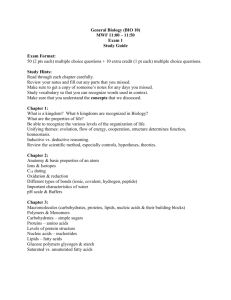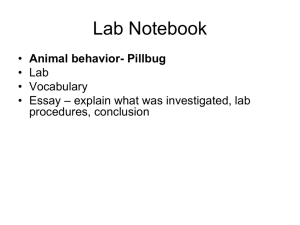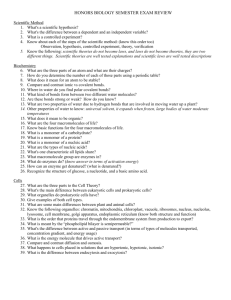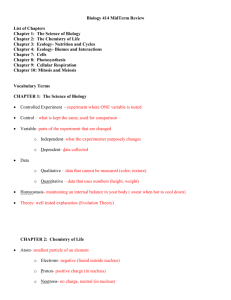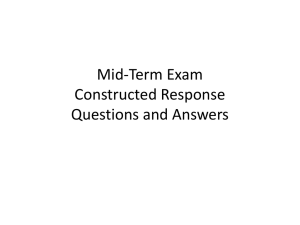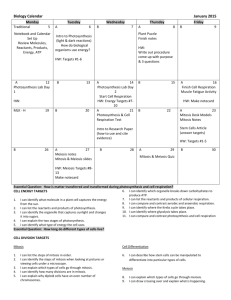Biology Test II Review
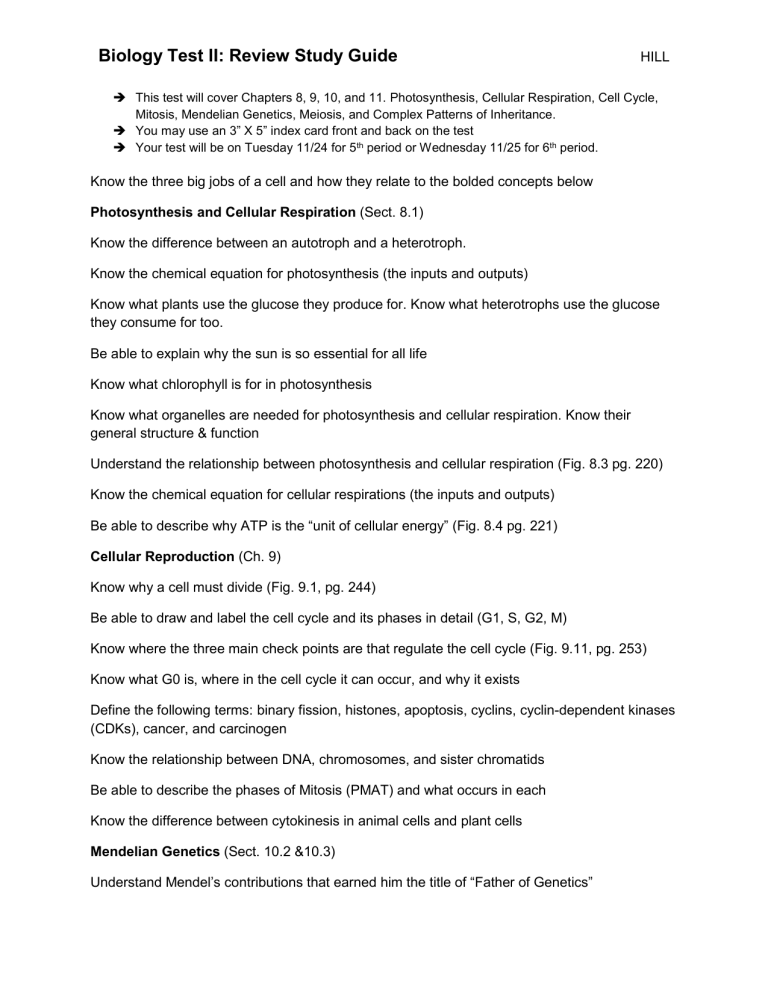
Biology Test II: Review Study Guide
HILL
This test will cover Chapters 8, 9, 10, and 11. Photosynthesis, Cellular Respiration, Cell Cycle,
Mitosis, Mendelian Genetics, Meiosis, and Complex Patterns of Inheritance.
You may use an 3” X 5” index card front and back on the test
Your test will be on Tuesday 11/24 for 5 th period or Wednesday 11/25 for 6 th period.
Know the three big jobs of a cell and how they relate to the bolded concepts below
Photosynthesis and Cellular Respiration (Sect. 8.1)
Know the difference between an autotroph and a heterotroph.
Know the chemical equation for photosynthesis (the inputs and outputs)
Know what plants use the glucose they produce for. Know what heterotrophs use the glucose they consume for too.
Be able to explain why the sun is so essential for all life
Know what chlorophyll is for in photosynthesis
Know what organelles are needed for photosynthesis and cellular respiration. Know their general structure & function
Understand the relationship between photosynthesis and cellular respiration (Fig. 8.3 pg. 220)
Know the chemical equation for cellular respirations (the inputs and outputs)
Be able to describe why ATP is the “unit of cellular energy” (Fig. 8.4 pg. 221)
Cellular Reproduction (Ch. 9)
Know why a cell must divide (Fig. 9.1, pg. 244)
Be able to draw and label the cell cycle and its phases in detail (G1, S, G2, M)
Know where the three main check points are that regulate the cell cycle (Fig. 9.11, pg. 253)
Know what G0 is, where in the cell cycle it can occur, and why it exists
Define the following terms: binary fission, histones, apoptosis, cyclins, cyclin-dependent kinases
(CDKs), cancer, and carcinogen
Know the relationship between DNA, chromosomes, and sister chromatids
Be able to describe the phases of Mitosis (PMAT) and what occurs in each
Know the difference between cytokinesis in animal cells and plant cells
Mendelian Genetics (Sect. 10.2 &10.3)
Understand Mendel’s contributions that earned him the title of “Father of Genetics”
Know the three principles of Mendelian Genetics: Dominance, Law of Independent Assortment, and Law of Segregation.
Define these terms: genotype, phenotype, homozygous, heterozygous, hybrid (mono- / di-), trait, gene, allele, dominant, recessive, gene-linkage, sex-linked traits
Know how phenotypic and genotypic ratios give us probabilities that describe possible offspring
Be able to calculate the probability of a specific genotype or phenotype using a Punnett square
(both a monohybrid OR di-hybrid cross)
Meiosis (Sect. 10.1)
Know what the end product of meiosis is.
Know the phases of meiosis and what occurs in each phase
Be able to differentiate between homologous pairs and sister chromatids
Know how many autosomes, sex chromosomes, and chromosome pairs humans have
Know the difference between diploid and haploid cells and exactly where a cell becomes haploid in meiosis
Know what synapsis, tetrad, crossing over, and chromosome recombination are, how they relate and when they occur.
Know how meiosis I is different from mitosis and how meiosis II is similar to mitosis
Know what the three sources of genetic variation are and when they happen
Independent Orientation
Chromosome Recombination
Random Fertilization
Complex Patterns of Inheritance (Ch. 11)
Know how to analyze pedigrees to make inferences about the genotype of individuals across generations
Purebred vs. Mono-hybrid vs. Di-hybrid Cross
Be able to explain how incomplete dominance and co-dominance differ from complete dominance. Give examples of each.
Know how traits with multiple alleles are different from those that are polygenic
Understand this commonly used phrase: “Nature vs. Nurture”
Know what a karyotype is and how it is used to identify genetic disorders
Be able to give examples of non-disjunction and how this affects offspring

